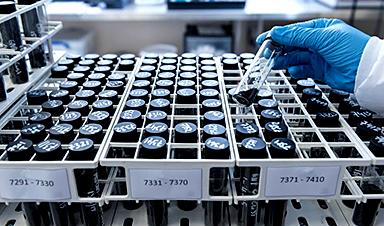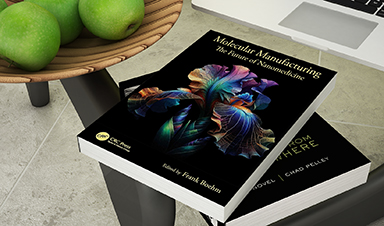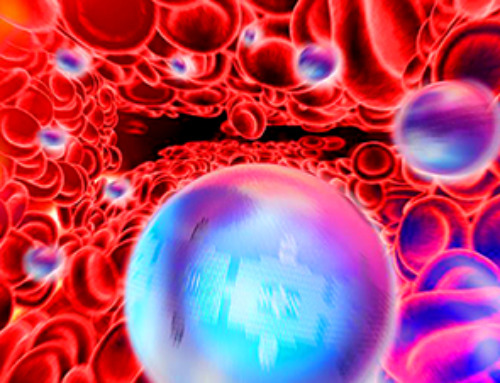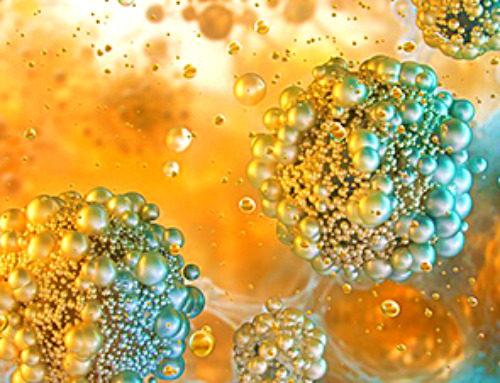As a COVID-19 and medical device researcher, I understand the importance of face masks to prevent the spread of the coronavirus. So I am intrigued that some mask manufacturers have begun adding graphene coatings to their face masks to inactivate the virus. Many viruses, fungi and bacteria are incapacitated by graphene in laboratory studies, including feline coronavirus.
How does graphene damage viruses, bacteria and human cells?
Graphene is a thin but strong and conductive two-dimensional sheet of carbon atoms. There are three ways that it can help prevent the spread of microbes:
– Microscopic graphene particles have sharp edges that mechanically damage viruses and cells as they pass by them.
– Graphene is negatively charged with highly mobile electrons that electrostaticly trap and inactivate some viruses and cells.
– Graphene causes cells to generate oxygen free radicals that can damage them and impairs their cellular metabolism.
Why graphene may be linked to lung injury
Researchers have been studying the potential negative impacts of inhaling microscopic graphene on mammals. In one 2016 experiment, mice with graphene placed in their lungs experienced localized lung tissue damage, inflammation, formation of granulomas (where the body tries to wall off the graphene), and persistent lung injury, similar to what occurs when humans inhale asbestos. A different study from 2013 found that when human cells were bound to graphene, the cells were damaged.
In order to mimic human lungs, scientists have developed biological models designed to simulate the impact of high concentration aerosolized graphene – graphene in the form of a fine spray or suspension in air – on industrial workers. One such study published in March 2020 found that a lifetime of industrial exposure to graphene induced inflammation and weakened the simulated lungs’ protective barrier.
It’s important to note that these models are not perfect options for studying the dramatically lower levels of graphene inhaled from a face mask, but researchers have used them in the past to learn more about these sorts of exposures. A study from 2016 found that a small portion of aerosolized graphene nanoparticles could move down a simulated mouth and nose passages and penetrate into the lungs. A 2018 study found that brief exposure to a lower amount of aerosolized graphene did not notably damage lung cells in a model.
From my perspective as a researcher, this trio of findings suggest that a little bit of graphene in the lungs is likely OK, but a lot is dangerous.
Although it might seem obvious to compare inhaling graphene to the well-known harms of breathing in asbestos, the two substances behave differently in one key way. The body’s natural system for disposing of foreign particles cannot remove asbestos, which is why long-term exposure to asbestos can lead to the cancer mesothelioma. But in studies using mouse models to measure the impact of high dose lung exposure to graphene, the body’s natural disposal system does remove the graphene, although it occurs very slowly over 30 to 90 days.
The findings of these studies shed light on the possible health impacts of breathing in microscopic graphene in either small or large doses. However, these models don’t reflect the full complexity of human experiences. So the strength of the evidence about either the benefit of wearing a graphene mask, or the harm of inhaling microscopic graphene as a result of wearing it, is very weak.
Image Credit: NBIC
Post by Amanda Scott, NA CEO. Follow her on twitter @tantriclens
Thanks to Heinz V. Hoenen. Follow him on twitter: @HeinzVHoenen
News
Two New Books From Frank Boehm, NA Founder – To be Released Dec. 2025
Molecular Manufacturing: The Future of Nanomedicine This book explores the revolutionary potential of atomically precise manufacturing technologies to transform global healthcare, as well as practically every other sector across society. This forward-thinking volume examines [...]
What could the future of nanoscience look like?
Society has a lot to thank for nanoscience. From improved health monitoring to reducing the size of electronics, scientists’ ability to delve deeper and better understand chemistry at the nanoscale has opened up numerous [...]
Scientists Melt Cancer’s Hidden “Power Hubs” and Stop Tumor Growth
Researchers discovered that in a rare kidney cancer, RNA builds droplet-like hubs that act as growth control centers inside tumor cells. By engineering a molecular switch to dissolve these hubs, they were able to halt cancer [...]
Platelet-inspired nanoparticles could improve treatment of inflammatory diseases
Scientists have developed platelet-inspired nanoparticles that deliver anti-inflammatory drugs directly to brain-computer interface implants, doubling their effectiveness. Scientists have found a way to improve the performance of brain-computer interface (BCI) electrodes by delivering anti-inflammatory drugs directly [...]
After 150 years, a new chapter in cancer therapy is finally beginning
For decades, researchers have been looking for ways to destroy cancer cells in a targeted manner without further weakening the body. But for many patients whose immune system is severely impaired by chemotherapy or radiation, [...]
Older chemical libraries show promise for fighting resistant strains of COVID-19 virus
SARS‑CoV‑2, the virus that causes COVID-19, continues to mutate, with some newer strains becoming less responsive to current antiviral treatments like Paxlovid. Now, University of California San Diego scientists and an international team of [...]
Lower doses of immunotherapy for skin cancer give better results, study suggests
According to a new study, lower doses of approved immunotherapy for malignant melanoma can give better results against tumors, while reducing side effects. This is reported by researchers at Karolinska Institutet in the Journal of the National [...]
Researchers highlight five pathways through which microplastics can harm the brain
Microplastics could be fueling neurodegenerative diseases like Alzheimer's and Parkinson's, with a new study highlighting five ways microplastics can trigger inflammation and damage in the brain. More than 57 million people live with dementia, [...]
Tiny Metal Nanodots Obliterate Cancer Cells While Largely Sparing Healthy Tissue
Scientists have developed tiny metal-oxide particles that push cancer cells past their stress limits while sparing healthy tissue. An international team led by RMIT University has developed tiny particles called nanodots, crafted from a metallic compound, [...]
Gold Nanoclusters Could Supercharge Quantum Computers
Researchers found that gold “super atoms” can behave like the atoms in top-tier quantum systems—only far easier to scale. These tiny clusters can be customized at the molecular level, offering a powerful, tunable foundation [...]
A single shot of HPV vaccine may be enough to fight cervical cancer, study finds
WASHINGTON -- A single HPV vaccination appears just as effective as two doses at preventing the viral infection that causes cervical cancer, researchers reported Wednesday. HPV, or human papillomavirus, is very common and spread [...]
New technique overcomes technological barrier in 3D brain imaging
Scientists at the Swiss Light Source SLS have succeeded in mapping a piece of brain tissue in 3D at unprecedented resolution using X-rays, non-destructively. The breakthrough overcomes a long-standing technological barrier that had limited [...]
Scientists Uncover Hidden Blood Pattern in Long COVID
Researchers found persistent microclot and NET structures in Long COVID blood that may explain long-lasting symptoms. Researchers examining Long COVID have identified a structural connection between circulating microclots and neutrophil extracellular traps (NETs). The [...]
This Cellular Trick Helps Cancer Spread, but Could Also Stop It
Groups of normal cbiells can sense far into their surroundings, helping explain cancer cell migration. Understanding this ability could lead to new ways to limit tumor spread. The tale of the princess and the [...]
New mRNA therapy targets drug-resistant pneumonia
Bacteria that multiply on surfaces are a major headache in health care when they gain a foothold on, for example, implants or in catheters. Researchers at Chalmers University of Technology in Sweden have found [...]
Current Heart Health Guidelines Are Failing To Catch a Deadly Genetic Killer
New research reveals that standard screening misses most people with a common inherited cholesterol disorder. A Mayo Clinic study reports that current genetic screening guidelines overlook most people who have familial hypercholesterolemia, an inherited disorder that [...]





















